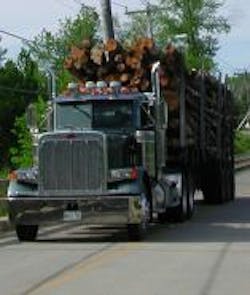“The concept here is to help unify shipper and carrier support for heavier trucks; to explain the advantages for both groups so we push this [legislation] the last mile.” –John Runyan, executive director, Coalition for Transportation Productivity
In an effort to forge a more united front among shippers and carriers in support of the Safe and Efficient Transportation Act (SETA), which would grant states the ability to raise interstate weight limits to 97,000 lbs. for six-axle trucks, the Coalition for Transportation Productivity (CTP) recently put together a video touting what it believes the benefits of allowing heavier trucks to operate on U.S. highways might be.
I spoke with John Runyan, CTP’s executive director, about why his group felt putting such a video together is a necessary move at this stage in the legislative game, and his point to me is that the benefits – both in terms of safety and economics – need to be “more forcefully explained” to the carrier and shipper community alike.
For example, one beef among truckers is that raising the weight limit for commercial trucks could, in essence, allow shippers to get more cargo hauled for the same price – not something that’s particularly attractive to fleets or drivers, especially with the costs of adding a third axle to a 53-foot trailer thrown in.
“That’s why we need to get and talk about the benefits more, because shippers especially must realize that this [heavier truck] concept will never take off if they don’t pay more for the service,” Runyan told me. “There needs to be something for everyone in this – for shippers and carriers alike – or it will never happen.”
In a letter to Congress back in July, he explained that, in order to drive and accommodate future U.S. economic growth, the nation can either put more trucks on the road or allow the existing fleet to safely carry more weight.
“SETA offers each state the ability to open portions of its interstate network to safer six-axle trucks that can ship more freight while meeting the same federal braking and handling standards,” Runyan emphasized. “Six-axle trucks can help companies lower their accident rates and dramatically reduce their fuel use and carbon emissions.”
That extra weight also might not impact bridges and roads as much as many fear; at least, that’s the finding of an analysis conducted by Maine’s Department of Transportation following a year-long pilot program that allowed heavy six-axle trucks to operate on its highways instead of secondary roads.
Now, of course, there are a lot of naysayers out there that don’t see heavier trucks in such a positive light – and are none too bashful in their criticism.
However, more and more members of Congress – both in the Senate and the House – are willing to at least listen to the argument for heavier trucks simply if for no other reason than to help cut fuel consumption and pollution generation from the transportation sector.
One thing is for certain – CTP’s video is but one more salvo in a battle that’s far from over.
